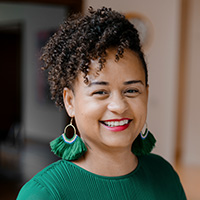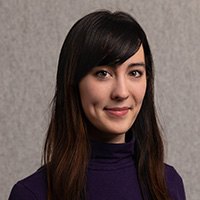Our sixth annual Net Zero Fellows: Anyeley Hallová of Adre and Hannah Rusnac of Holst.
Visit our On-demand Training page to watch the presentation recordings.
Our sixth annual Net Zero Fellows: Anyeley Hallová of Adre and Hannah Rusnac of Holst.
Visit our On-demand Training page to watch the presentation recordings.
The Williams & Russell Project: Developing a Framework for an Ecodistrict and District Energy Microgrid.
Anyeley Hallová, Adre
The Williams & Russell (W&R) Project site is a 1.7-acre city block in the heart of Portland’s Albina neighborhood. All structures on site were demolished for a planned expansion that was never realized. The W&R Project sets out to build affordable office, rental and homeownership opportunities for Portland’s African American community, specifically serving those who were displaced from the site. Adre will partner with project architect, LEVER Architecture, engineering firm, PAE, Biohabitats, a consultancy focused on hydrology and water-based infrastructures, and may include the Center for Sustainable Infrastructure, a nonprofit organization that focuses on resilient infrastructure design.

Anyeley Hallová
Founder, Adre
Anyeley is a real estate developer with over 17 years of experience and is founder of Adre, a real estate development company focused on developing buildings that create social and economic benefits for BIPOC communities through the creation of affordable homes, mixed-use developments and facilities for mission-driven organizations.
Her passion to shape the built environment in ways that respect our natural environment has earned her a place amongst the “Grist 50,” an annual national list of sustainability visionaries, as well as the Urban Land Institute’s “40 under 40,” as one of the best young land-use professionals from around the globe. Her civic work includes a gubernatorial appointment to Oregon’s Land Conservation and Development Commission (LCDC). She is currently serving on the board of the US Green Building Council.
View Presentation:
The Williams and Russell Project: District Systems for Equity-Centered Development
Carbon Crossroads: An Analysis of Operational and Embodied Carbon in Multifamily Housing.
Hannah Rusnac, Holst
Oregon will need an estimated 600,000 new homes over the next 20 years (OHCS, 2021) to keep up with projected population growth. This pressing need challenges the building industry to provide many homes quickly, but it also offers an opportunity to develop strategies for multifamily housing that address net-zero operational carbon goals while aiming for lower embodied carbon footprints. Hannah’s study aims to provide designers and the larger development team (owners, engineers, etc.) with embodied and operational carbon assessments of local projects, to help them aim for net-zero carbon footprints in new multifamily housing in Oregon.

Hannah Rusnac
NCIDQ, CPHC
Designer, Holst
Hannah is a multidisciplinary designer who creates spaces that are sustainable and supportive of human health and well-being. While a Master of Architecture student, her research focused on the environmental impacts of mass timber and whole building life cycle assessment. At Holst, she seeks out unique solutions for each design challenge, guided by her background in architecture, interior design and sustainability research.
View Presentation:
Carbon Crossroads: An Analysis of Operational and Embodied Carbon in Multifamily Housing
To assist in selecting the grant recipient, Energy Trust assembled a Net Zero Advisory Panel comprised of leaders in a variety of commercial new construction industry sectors.
| Andrea Caudill Port of Portland | Clayton Crowhurst Northwest Housing Alternatives | Erica Dunn Green Hammer |
| Ihab Elzeyadi University of Oregon | Joel Good RWDI | Jeni Hall Energy Trust |
| Mark Perepelitza SERA Architects | Rohini Srivastava American Council for an Energy-Efficient Economy | David Burchfield Burch Energy Services |
| Shelly Carlton Energy Trust | Ralph DiNola New Buildings Institute | Mark McKechnie Oregon Architecture Inc. |
| Sam Rosenberg Pacific Northwest National Laboratory |
Image courtesy of Anyeley Hallová.